Having Fun With The 1 4 5 Chord Progression
![]() Things that seem boring and routine on the surface can often be looked at in different ways. This is necessary when we want to give a new perspective and new life to something that’s considered fundamental. In this case, I’m talking about the 1 4 5 Chord Progression.
Things that seem boring and routine on the surface can often be looked at in different ways. This is necessary when we want to give a new perspective and new life to something that’s considered fundamental. In this case, I’m talking about the 1 4 5 Chord Progression.
If you have the most basic understanding of chords, you’ll recognize these three chords as the primary chords. They are the most used chords in a song. Of course, I’m referring to these chords in a Major key of music.
Just these three chords can harmonize the melody of thousands of songs. It’s exciting when you realize that three chords are all you need. On the other other hand, you know that it can become uninspiring to use the same three chords over and over in several songs. So what you can you do to freshen up your harmony?
The Primary Chords
Just so I’m not getting ahead of myself, I want to briefly explain what the primary chords are. In a Major key of music you have seven different notes. It’s just a simple menu in which you draw from to play the melody of a song and build a harmony (chords) from. Each one of those seven different notes has a numbered sequence.
Take C Major for example:
C is 1, D is 2, E is 3, F is 4, G is 5, A is 6 and B is 7.
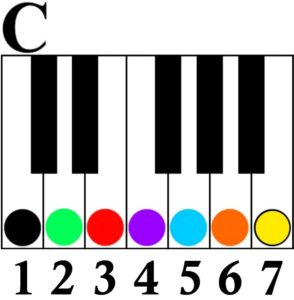
Can you find the primary (1 4 & 5 chords) based on these numbers?
That’s right. It’s C Major, F Major, and G Major. 1 4 5 chord progression
The most standard way that you can play any chord is to play it in root position. If you’re familiar with the formula for a Major chord, you know that it consists of the root, third and fifth.
That’s C E and G for the C Major Chord
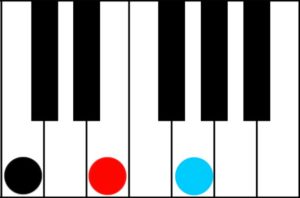
That’s F A and C for the F Major Chord
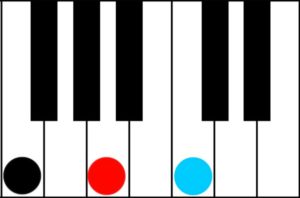
That’s G B and D for the G Major Chord
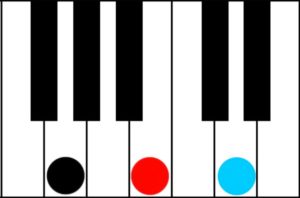
If you’re just getting to know your Major Chords, sit down at your piano or keyboard and play each one of these chords. You may be used to playing chords in your left hand and playing melodies in your right hand. If this the case, try playing those three chords with your right hand. You can actually give your left hand a rest. Why? Because chords sound better when they’re played closer to middle C on the keyboard.
And you can put chords underneath your right hand melody. What makes your playing sound even more interesting, is playing bass notes in your left hand instead of trying plunk out three or four note chords. Although we won’t be playing melodies in this article, I just wanted to emphasize that playing chords in your right hand is something you should focus on if you want to sound like a pro.
Now that you have the feel for playing the primary chords in the key of C Major, let’s try to polish them up to sound better. Instead of root position on the one chord (C Major), let’s play it in second inversion. If you’re not familiar with chord inversions, it’s simply rearranging the notes of the chord. You have root position, first inversion and second inversion. For every two notes in a chord you have two possible inversions to play it in. But for the most part, inversions usually refer to three note chords known as triads.
The root position of a chord is where you have the root, (the note the chord is named after) on the bottom.

C Major Root Position
The first inversion of a chord is where the root is on top of the chord.
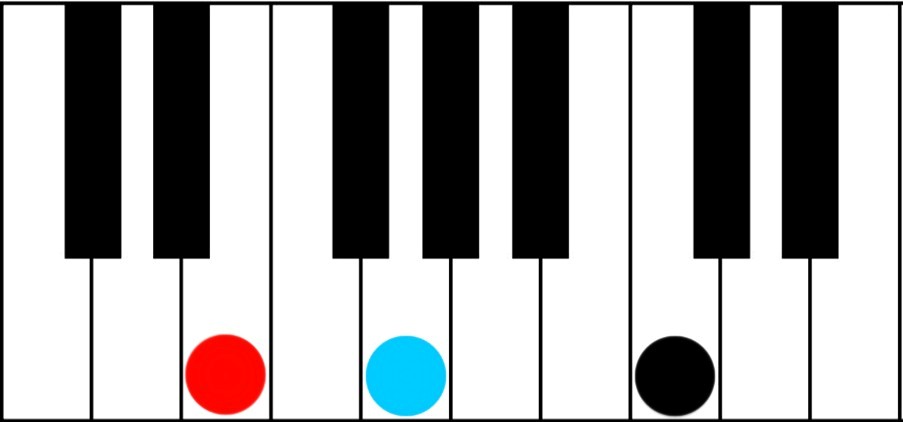 The second inversion of a chord is where the root is in the middle of the chord.
The second inversion of a chord is where the root is in the middle of the chord.
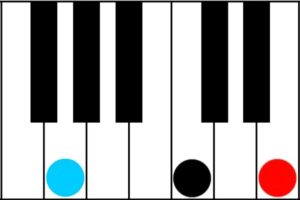
Let’s play the one chord (C Major) in second inversion. We’ll keep the four (F Major) and Five (G Major) chords in root position.
Now play all three chords in the 1 4 5 chord progression. [ezcol_1third] [/ezcol_1third] [ezcol_1third]
[/ezcol_1third] [ezcol_1third] [/ezcol_1third] [ezcol_1third_end]
[/ezcol_1third] [ezcol_1third_end] [/ezcol_1third_end]You don’t have to play them in any kind of rhythm at this point. You just need to let your hands get familiar with these chords. After playing this chord progression, you may have noticed that playing the C chord in second inversion makes for a smooth transition to the F chord. With the F chord being a half step below the G chord, it also makes for an smoother transition.
[/ezcol_1third_end]You don’t have to play them in any kind of rhythm at this point. You just need to let your hands get familiar with these chords. After playing this chord progression, you may have noticed that playing the C chord in second inversion makes for a smooth transition to the F chord. With the F chord being a half step below the G chord, it also makes for an smoother transition.
Now let’s add some bass with our left hand. Can you guess what notes would make this progression sound fuller and more like real music? Of course, it’s the root of each our chords. This doubles the root we’re playing in our right hand.
Add C with C Major  Add F with F Major
Add F with F Major  Add G with G Major
Add G with G Major
Play these root notes in your left hand in the same intervals that you’re playing the primary chords.
In the left hand, play C first. Then play the F below G. Then play the G above it.

Now we’re going to add some flavor to these simple primary chords. We’re going to add the second. What’s a second? I’m glad you asked. I have to refer the key of each one of these primary chords to explain.
Every Major key of music has a root chord. This is quite easy to understand because the root chord is named after the key that it’s in. These root chords are Major chords. You can add any note that’s in the key to the root Major chord. There are specifics and conditions as to what notes you add and when you add them, but we’re going to keep it simple for now and just add the second.
The second of the key of C Major
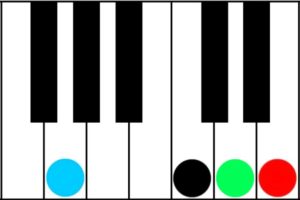
The second of the key of F Major
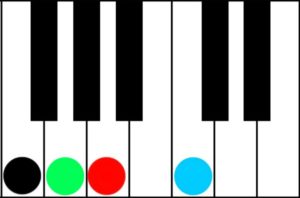
Can you guess what the root chord of G Major is? I know I don’t have to tell you but…
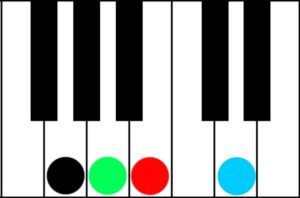
The G Major chord is the root chord of the key of G Major.
How to find the second:
It’s really simple to find the second tone to add to a major chord. Just move a half step up from the root and you’re on the second degree of the scale or key of music as I prefer to call it.
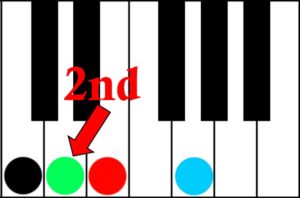
So these are add2 chords. And they’re just that. The added two to a chord.
Now let’s play the 1 4 5 progression with the “new” chord that we just learned. I know that it’s not technically a new chord, but you’ll find that adding the second gives a new flavor to a plain triad.
I know this article is about the 1 4 5 chord progression but I hope you’ll forgive me if I go just a step further. (Just for the sake of having fun which is also what this article is about)
We’re playing a chord progression: chords that progresses from one to another. So let’s progress to a few more chords before we call it a day. We’re playing in the key of C major. That gives us the freedom to play other chords that are in the key.
Let’s add the 2 3 4 chord progression.
We learned earlier that the second tone in the key of C major is D.

The third tone happens to be the same interval that we found the second tone with. It’s a whole step away from the second.

Can you guess what interval the fourth tone is away from the third? If you guessed a whole step then I’m afraid you would be wrong. It’s actually a half step away from the third. If you didn’t know the answer, please learn your Major keys of music. You’ll use them for the rest of your musical life.

So we have D, E and F. Just to reiterate, these are the 2nd, 3rd and 4th notes of C Major. They each have a corresponding chord. I know we’re already using the four chord, but this is a separate progression than the 1 4 5. After we play the 1 4 5 chord progression a couple of times, we’ll move into the 2 3 4.
Unlike the primary chords, the two and three chords are minor.
So you have the D minor and E minor chord.
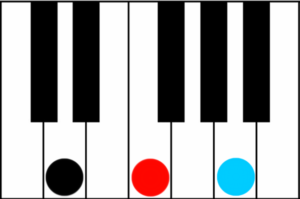
D minor
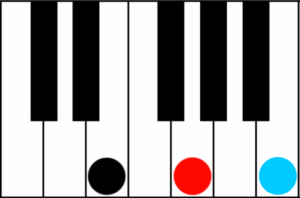
E minor
You can play the F major chord is the same as in the 1 4 5 progression with or without the 2nd if you choose.
So the progression in Keyshots look like this. We’re also using the concept of playing the root note in our left hand. Since were changing things up, we’ll add the dominant 7th in the right hand. In the right hand, these chords are going to appear to be simple major chords. But because of the bass note, they’re minor 7th chords.

D minor 7

E minor 7
Then the progression moves to the F (4) chord.
Now here’s the beauty of of any chord progression. When you’re familiar with other major keys of music, you can transpose them to those other keys. All major keys may sound relatively the same, but it’s the subtle nuances of different pitches that can make the same chord progressions sound different and fresh. This is really something that you will experience as you progress in music.
You can learn how to play this progression in other keys. Here’s an instructional guide that you can download for free that will help your to learn your Major keys in music. You can download it here just by subscribing to the free Color Notes Ezine.
Find out more about Color Score! The easiest way to learn how to play the piano like a professional.
Until next time, Go Play!
Greg Lee
Latest posts by Greg Lee (see all)
- What is a minor/Major 7 Chord? - October 26, 2023
- 7 Chord Substitutions that Professionals Use - October 19, 2023
- 5 Simple Chord Tricks to Sound Amazing - October 5, 2023





